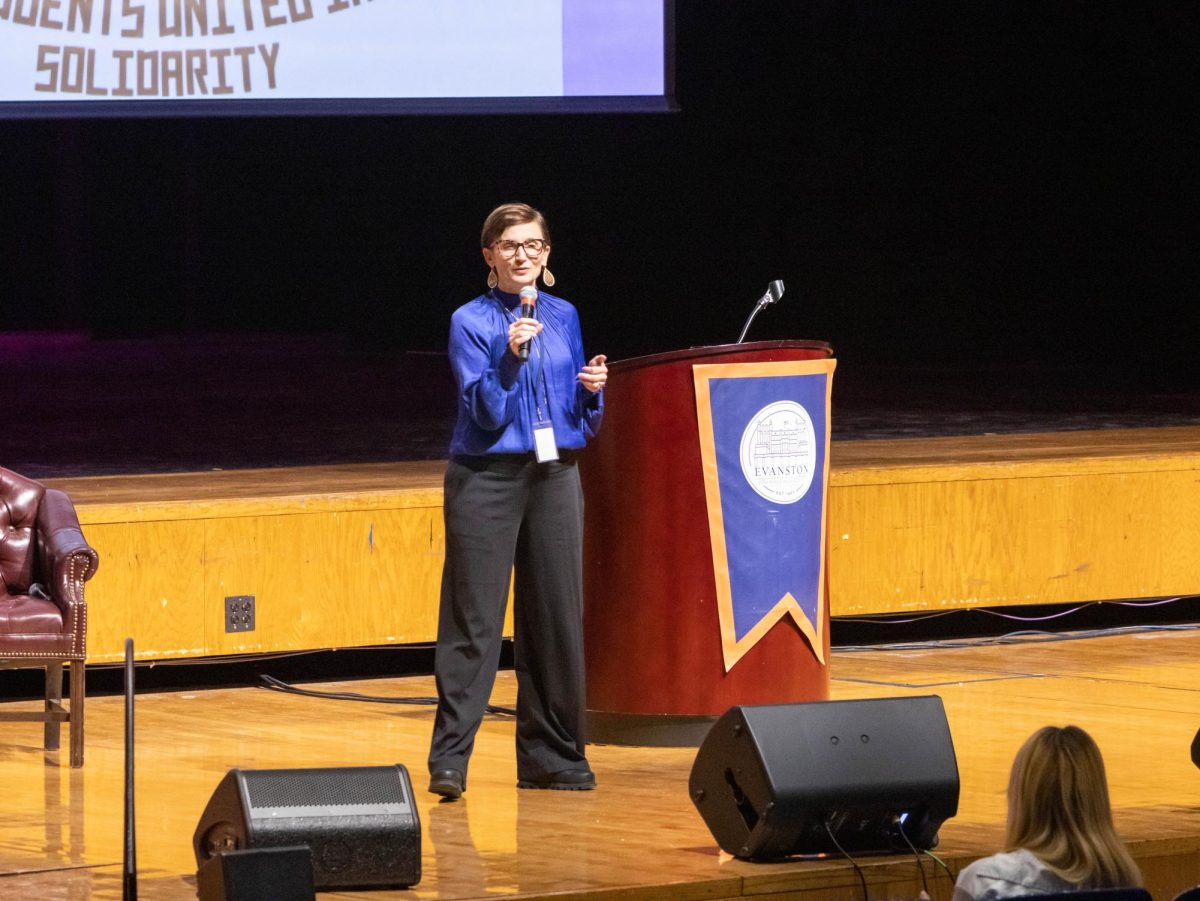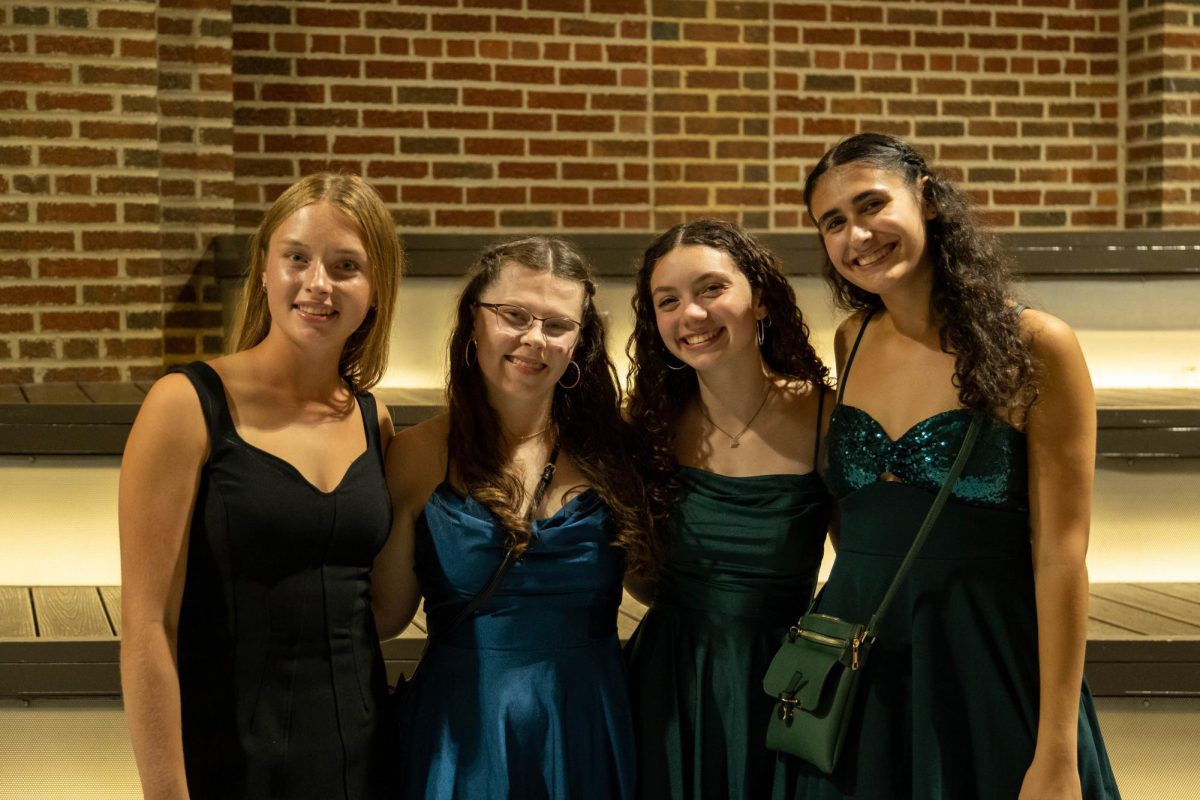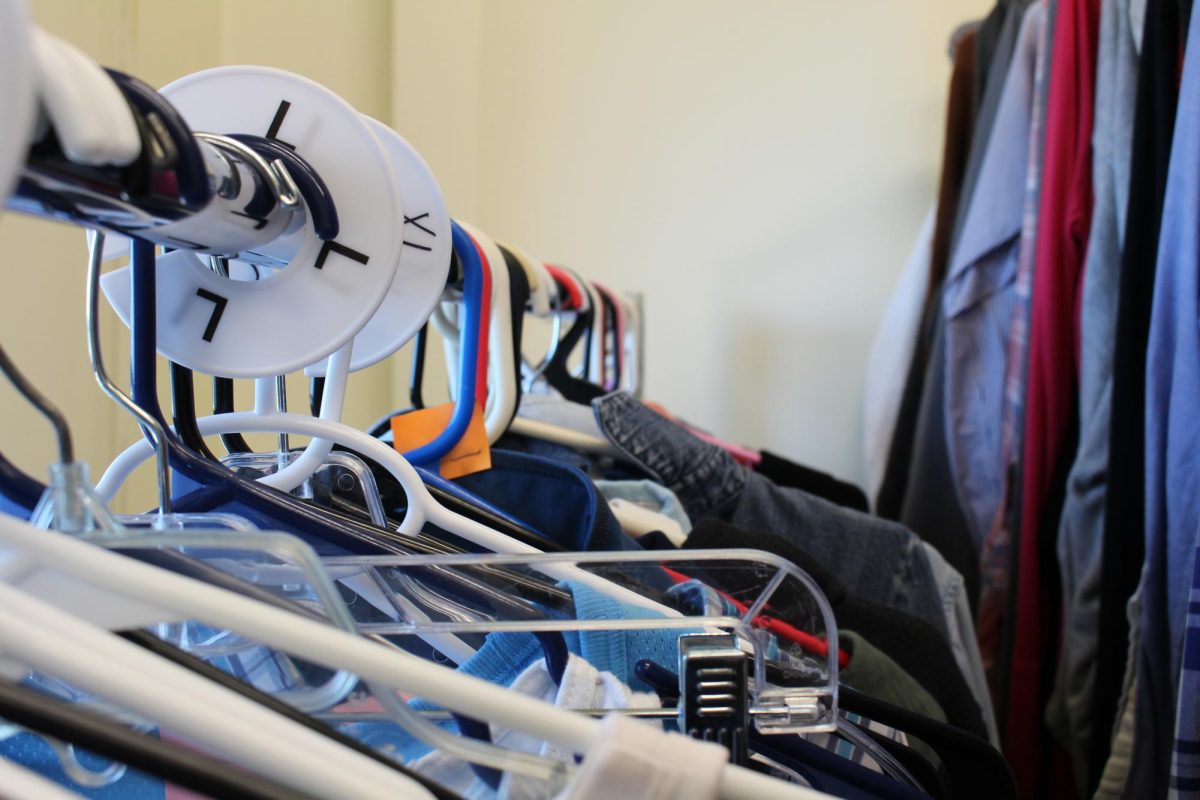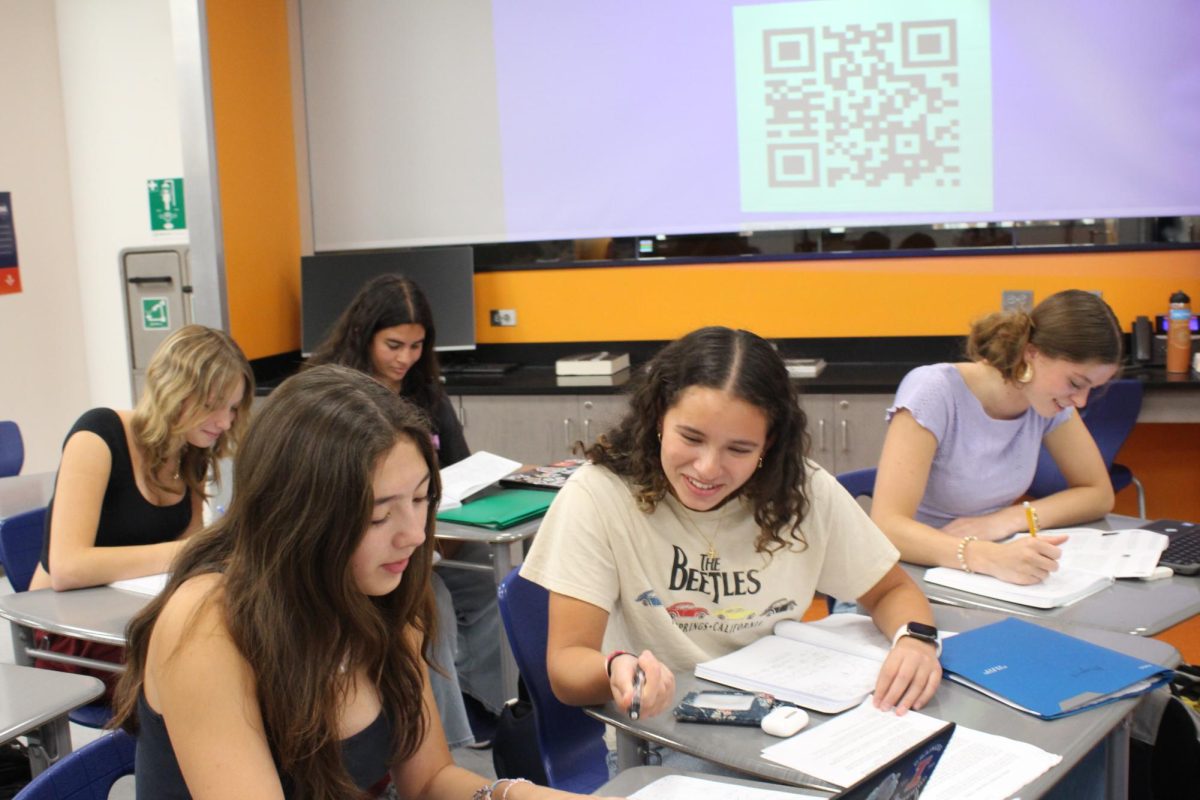Ten years of summits at ETHS
Just under ten years ago, ETHS had it’s first summit—dedicated to creating an affinity space for young black men. With years of work from both students and administrators the summits have become a staple of student culture at ETHS.
March 15, 2023
Saheli Goel is a sophomore at ETHS and yet she had never been to a summit at ETHS before—that is, until she attended the MENAA summit that took place March 1. The summit, she recounts, was full of life, with students from every background armed with all sorts of different experiences coming together to celebrate what made them different; and what brought them together.
Goel recalls walking through the mere beginning of the summit and how it was already bustling with eager students and staff. They busied themselves by collecting merchandise and becoming familiar with the space before the clock even chimed 8:30. Most were donned with the new t-shirt, a painted image of two koi fish circling each other to represent the theme of the year—healing and solidarity—while others awaited eagerly to get one themselves.
From there, the students were herded towards the Upstairs Theater, where the seats soon became crowded with old friends chatting and new ones in the making. Others ran up and down the isles, settling in last minute preparations. Though the summit had yet to even officially commence, Goel says that the feeling of community was vivid, and she knew it would only continue to grow when the lights dimmed and the summit truly began.
“I can’t wait for next year,” she adds. “And I regret not going before.”
Though the summits often focus on one to a few minority groups, students from all different backgrounds are present–it is a time to embrace any and all identities. Some students are present at every summit for their four years at ETHS, donned with memories but keen to make more. For others, it may be their very first time–to immerse themselves in the community, sink into the space, and experience the summit for themselves.
The summit itself is an in-school field trip that transpires the entire school day. It usually begins with an opening ceremony, one to welcome all the students who attend and to touch base on the theme of that summit taking place. There are a number of performances that occur from then on, with participants that include everyone from students and staff to community members brought in. There are also several workshops that follow, which are created from student ideas and are led and facilitated by students, staff, or outside members of the community.
The first-ever summit at ETHS was held in 2014: the Black Male Summit. It was started by a group of Black male educators who recognized that ETHS did not have a space provided for Black male students to lean into affinity and have a day to be celebrated, to be educated–and saw that it was a feat that needed to change.
Among the Black male educators who first introduced the summits was Dr. Marcus Campbell, the current superintendent at ETHS. At the time, he says, they were looking into ways to provide more for Black students and staff who haven’t been exposed to new opportunities and the kind of affinity that summits aim to provide.
“It was a day just of love and support and affirmation, a day that we would [use to] get them exposed to different career opportunities, both in Evanston and opportunities for work and career in Evanston and larger [communities],” describes Campbell. “That year, we had about 130 Black men serve as mentors, chaperones, session leaders, from the city of Evanston—doctors, lawyers, entrepreneurs, teachers, you name it—from every walk of life.”
From there, the ideas of summits really branched out. Not long after that first summit, the Black Female Summit took place; and then the Latinx Summit, the SAAME (South Asian African Middle Eastern)–which is now the MENAA–(Middle Eastern North African Asian) Summit, and the LGBTQIA+ Summit. Despite the countless summits hosted at ETHS today, the first summit is not one to be forgotten; it began a long chain of days to honor different cultures, different people, staff and students alike. It was the first to provide a space for students and staff of color to be recognized and revered.
“Black educators, and especially Latinx educators in this building, just [felt] there was a lack of space,” says ETHS equity analyst Lauren Hamilton. “[There was a] need to have a summit and create spaces—racial affinity spaces for students.”
The summits have been taking place annually at ETHS for a number of years and have become a concept to which ETHS students have grown accustomed. They have become spaces where students are able to celebrate their identities and backgrounds, ones that are often overlooked by communities at-large. But this is not the norm for any other schools, nor was it for most of the staff members who are in charge of the program now.
“This was really started by educators who didn’t really have [that] experience themselves as adults in this building.” Hamilton adds.
“I don’t know of any other school in the country that’s running a day conference for students [during] the school days–it’s unheard of.” Campbell says. “[But] I think it’s necessary.”
Though the ideas for the summits stemmed from educators and staff at ETHS, there are many students involved in the process. There is an Organizing Committee dedicated to each summit, almost completely run by students. Hamilton says she is merely aiding their motions.
“The expectation and the desire is that we are truly centering student voice and student needs, and then we as adults in that process, help bring that student vision to life,” Hamilton shares.
It’s a very intensive process. The committee usually begins meeting in October to prepare for an event that doesn’t take place until late winter or early spring of the following year. For the Black Student Summit this year, they held weekly meetings beginning in the fall, until the unveiling of the summit a few weeks ago.
Each summit also has its own ways of involving the student body in the process, from the student run committees contributing, to clubs playing large roles in the procedure. The LGBTQ+ summit leans on the GSA club to be active in bringing the summit to life. For the MENNA summit, the SAAME club and the AHA Student Association contribute ideas for the event. And for the Latinx Summits, there are several Latinx student affinity groups that devote their time to participate in the planning process.
“My hope in starting the student committee years ago was to really give students a space to just come together and get to know each other. Not having to rush into the details of planning [allows students] to really build community.” Hamilton continues, “I’ve experienced [that] the closer we are as a group, the better the event tends to be.”
The number of students who attend the summits plays a big part as well. Though there have always been large numbers of students who attend, the amount has only increased.
“[The] LGBTQ summit has been amazing to see grow. We used to be able to fit in the Upstairs Theater, and we’ve grown bigger than that,” Hamilton says. “But each summit has grown every year.”
Despite stemming from similar concepts and goals, the summits are never the same. Each year brings in new students, with new contributions and messages they want to convey. One student, sophomore Meah Arnold, says that the layout of the Black Student summit differed from the one that was held the year before.
“It was very different,” Arnold says. “Last year was about half a day, and it was based on specific grades. There was less time to do things that we needed to do. And [this year], it was like a full day to [experience more]. That was definitely better than last year.”
What inspired the first summit for Black male students so many years ago still reigns true today: to hold a space, every year, for all kinds of students and provide an opportunity for them to feel loved and supported by the school and their peers, as they may not receive that kind of appreciation anywhere else. This was the motion behind the first summit for Black male students and all the ones that have since followed.
“[It] was always a part of my vision to expand this day of love and affirmation to other groups that are marginalized, unseen, where our dominant system doesn’t acknowledge their identities, their contributions. That [there] are people, students, who carry identities that are fulfilling and visible,” Campbell says. “Here we would say, hey, you know, [this is] not just the day of love and affirmation, but a day to ask the question, what can we do better? What can we do more for you?”












Vivien Bissell • Mar 17, 2023 at 8:37 am
I love the idea of the summits but ETHS has got to stop using the word “Latinx.” Many Latinos have said they don’t like it and it makes no sense in Spanish. Latino is already a gender neutral term.